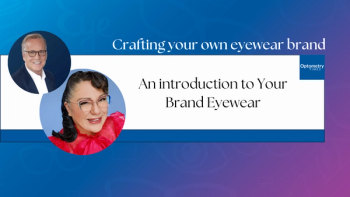
- July digital edition 2020
- Volume 12
- Issue 07
What to do if you're hit with tear gas
Effectively treat tear gas exposure with these steps
When pepper spray comes into contact with the eyes, potential symptoms include:
– Tearing
– Burning
– Redness
– Light sensitivity
– Uncontrollable closure of the eyelids (blepharospasm)
Irritation of the delicate skin surrounding the eyes may also result in:
– Redness
– Rashes
– Blisters
– Scaling
– Burning
– Swelling of the skin
Typically these symptoms will resolve on their own within 10 to 30 minutes, but steps can be taken to relieve symptoms in a shorter amount of time hopefully without lasting effects.2,6
The most important distinction is which treatments go into the eyes versus which treatments go around the eyes.
Upon exposure, follow these steps:
– Remain calm, and move to a safe location.
– Although the first instinct may be to rub the spray contents out of your eyes, wash your hands first. If your hands were exposed to the spray, wash them with soap and water before touching your eyes. Your tears will flow naturally during this time, giving you a moment to clean your hands. Blow your nose to remove as much spray content as you can.
– If wearing contact lenses, remove them immediately after hand washing and discard the lenses—you will not be able to use them again.
– If wearing glasses, remove them and do not put them back on until you wash them with water and soap.
– Wipe your face with a wet cloth before thoroughly washing your face with soap/baby shampoo and water. Wipe away from the eyes, nose, and mouth. Avoid getting soap into your eyes.
– Flush the eyes out by pouring water or saline solution directly into them for 10 to 20 minutes (poking a hole in the bottom of a water bottle is a good way to increase and direct the flow of water). Flush away from the eyes. Don’t pour down from your forehead or eyebrows, as you may be carrying more irritants into your eyes.2,4,5
– If irritation around the eyes continues after flushing the eyes, the skin surrounding the eyes can be washed with baby shampoo and water.
Milk should not be poured directly into the eyes, but it can be used to alleviate discomfort after flushing the eyes with water or saline:4
– Soak a washcloth in cold whole milk.
– Close your eyes and gently place the soaked washcloth over your closed eyes.
Prevent burning eyes
Preventative measures can be taken if contact with pepper spray or tear gas occurs. These measures may not fully protect from harmful effects but may decrease the exposure and lighten the symptoms.
Preventative measures that can be taken to avoid or ameliorate contact:
– A complete cover for your eyes is recommended. Consider wearing chemical-safety goggles. Glasses with side coverings that don’t allow spray or gases to slip in around the lenses are preferable.
– Cover nose and mouth with a mask.
– Put together a few things to bring along in a backpack:
• A portable spray bottle with clean distilled water. If access to distilled water is limited, even boiling the water beforehand helps.
• Small, clean towels for face wiping.
• Small bottle of soap or baby shampoo for washing hands and face. Because the active ingredient in pepper spray is oil based, soap will help to clean it off.
Post-exposure care and expectations
– No matter the amount of irritation, it is always a good idea to check in with an eye doctor.
– Irritation and further damage from exposure should cease after proper irrigation. You should notice a reduction in pain with flushing your eyes out; if the pain lasts for more than 45 minutes, see an eye doctor.4
– If there is chemical damage to the cornea, vision may be blurry for a while. With mild-moderate chemical burns, damage to the cornea should resolve within 72 hours with the appropriate intervention and in an otherwise healthy patient.2,3 This should be accompanied by a continued reduction in pain, improvement to vision, and a decrease in the symptoms of burning, redness, tearing, and light sensitivity.
– Severe ocular chemical burns, while uncommon with the type of tear gas used for crowd control, can lead to a certain type of glaucoma.7,8 This occurs when the chemical burn causes significant scarring that damages the drainage structures in the eye. Close monitoring by an eye doctor is the best way to ensure proper healing of the eyes after a severe chemical burn.
– Cataract development can result if the chemical agent causes long-term inflammation inside the eyes.7 If you have concerns about your ocular health after exposure to a chemical, you should be monitored by your eye doctor
Ms. Hansen is a member of SUNY College of Optometry, Class of 2021. hhansen@sunyopt.edu
Mr. Grecu is a member of SUNY College of Optometry, Class of 2022. dgrecu@sunyopt.edu.
References:
1. Barry JD, Hennessy R, McManus JG. A Randomized Controlled Trial Comparing Treatment Regimens for Acute Pain for Topical Oleoresin Capsaicin (pepper Spray) Exposure in Adult Volunteers. Prehosp Emerg Care. 2008;12(4):432-437.
2. Blain PG. Tear Gases and Irritant Incapacitants. 1-Chloroacetophenone, 2-Chlorobenzylidene Malononitrile and Dibenz[b,f]-1,4-Oxazepine. Toxicological reviews. 22.2 (2003): 103–110. Available at: https://doi. org/10.2165/00139709-200322020-00005
3. Committee on Acute Exposure Guideline Levels; Committee on Toxicology; Board on Environmental Studies and Toxicology; Division on Earth and Life Studies; National Research Council. Acute Exposure Guideline Levels for Selected Airborne Chemicals: Volume 16. Washington (DC): National Academies Press (US); 2014 Mar 21. 7, Tear Gas (CS) Available at: https:// www.ncbi.nlm.nih.gov/books/NBK224932/ .
4. Frontline Wellness United. Guidelines for Treating Pepper-Spray/Chemical Irritants. Available at: www.frontlinewellness.org/guidelines-for-treatingpepperspraychemical-irritants.
5. Kim YJ, AR Payal, Daly MK. Effects of Tear Gases on the Eye. Surv Ophthalmology. 2016;61(4):434-442.
6. Vesaluoma M, Müller L, Gallar J, Lambiase A, Moilanen J, Hack T, Belmonte C, Tervo T; Effects of Oleoresin Capsicum Pepper Spray on Human Corneal Morphology and Sensitivity. Invest Ophthalmol Vis. Sci. 2000;41(8):2138- 2147.
7. Great Britain. Army. Royal Army Medical Corps. Riot Control Agents: The Tear Gases CN, CS and OC-a Medical Review. J Royal Army Medical Corps. 2015;161(2):94-99.
8. Stefan C, Timaru CM, Iliescu DA, et al. Glaucoma after chemical burns and radiation. Rom J Ophthalmol. 2016;60(4):209-215.
9. Tidwell RD, Wills BK. Tear Gas (Pepper Spray) Toxicity. [Updated 2020 Mar 15]. StatPearls. Available at: https://www.ncbi.nlm.nih.gov/books/ NBK544263/.
Articles in this issue
over 4 years ago
How one OD encouraged glaucoma medication adherenceover 5 years ago
July 2020: Best of Q&Aover 5 years ago
Light versus wellness: a modern dilemmaover 5 years ago
COVID-19 response brings new protocolsover 5 years ago
MITA Eyewear debuts stylesover 5 years ago
12 recommendations for prescribing opioidsover 5 years ago
3 steps to getting started with dry eye treatmentover 5 years ago
The dropless future: SLT as a first-line treatment for glaucomaover 5 years ago
Committed to safety: One OD’s COVID-19 responseNewsletter
Want more insights like this? Subscribe to Optometry Times and get clinical pearls and practice tips delivered straight to your inbox.



















































.png)


